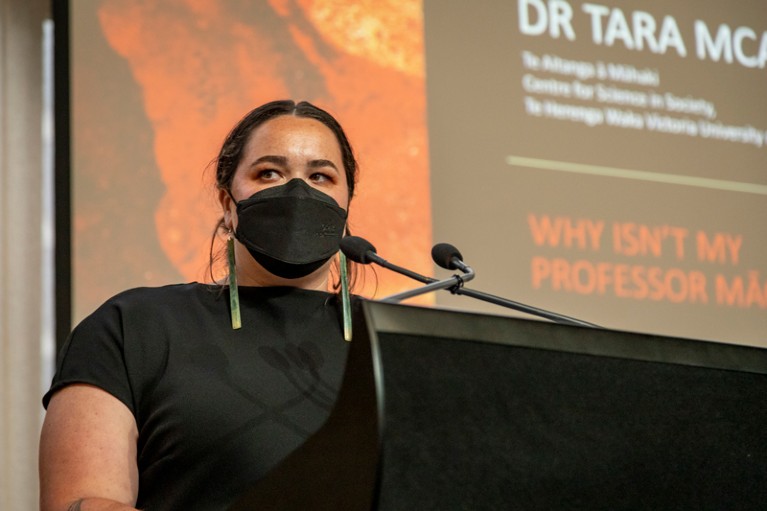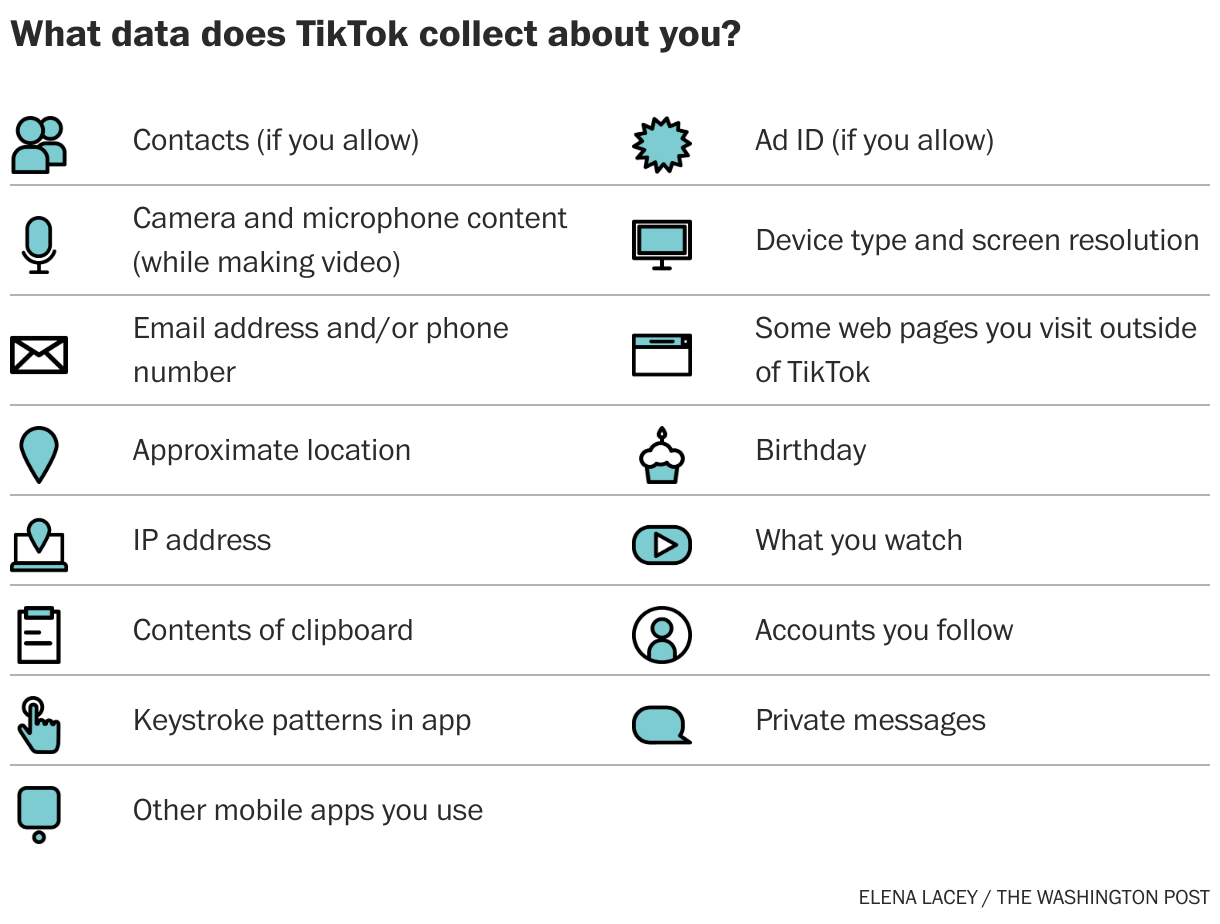[ad_1]

Rumors suggest the new model will even support pressure and tilt sensitivity, but it’s unknown when it’ll launch.
[ad_2]
Source Article Link


[ad_1]

Rumors suggest the new model will even support pressure and tilt sensitivity, but it’s unknown when it’ll launch.
[ad_2]
Source Article Link

[ad_1]

The duration and value of a grant are not likely to alter the research strategies of recipients in the United States.Credit: DigitalVision/Getty
Offering professors more money or time isn’t likely to dramatically change how they do their research, a survey of US-based academics has found.
The survey, described in a preprint article posted on arXiv in December1, was completed by 4,175 professors across several disciplines, including the natural sciences, social sciences, engineering, mathematics and humanities.
The study’s authors, Kyle Myers and Wei Yang Tham, both economists at Harvard Business School in Boston, Massachusetts, say the aim was to investigate whether senior scientists would conduct their research differently if they had more money but less time, or vice versa.
The research comes amid interest from some funders in tweaking the amount of time and money awarded to scientists to incentivize them to do more socially valuable work. For instance, in 2017, the Howard Hughes Medical Institute in Chevy Chase, Maryland, announced that it had extended its grants from five to seven years, arguing that the extra time would allow researchers to “take more risk and achieve more transformative advances”.
Acknowledging that the most reliable way to test how grant characteristics might affect researchers’ work is to award them actual grants — which was not feasible — Myers and Tham instead presented them with hypothetical scenarios.
The survey respondents were asked what research strategies they would pursue if they were offered a certain sum of grant money for a fixed time period. Both the value and duration were randomly assigned. The hypothetical grants were worth US$100,000 to $2 million and ran between two and ten years.
To capture the changes in strategy, the survey provided the participants with five options that they could take if they successfully obtained the hypothetical grant. These included pursuing riskier projects — for example, those with only a small chance of success – or ones that were unrelated to their current work and increasing the speed or size of their ongoing projects.
The survey revealed that longer grants increased the researchers’ willingness to pursue riskier projects — but this held true only for tenured professors, who can afford to take a gamble because they tend to have long-term job security, an established reputation and access to more resources. The authors note, however, that any change in research strategy that resulted from receiving a longer grant was not substantial.
Non-tenured professors were not swayed towards risk-taking when they received longer grants. This finding suggests that longer grant designs don’t take into account the pressures that come with shorter employment contracts, says Myers. “If you’re a professor who’s on a 1- or 2-year contract, where you have to get renewed every year, then the difference between a 5-year or 10-year grant is not as important as performing in the next year or two,” he says.
Both tenured and non-tenured professors said longer, larger grants would slow down how fast they worked, “which suggests a significant amount of racing in science is in pursuit of resources”, the authors say, adding that this effect was also minor.
Myers and Tham report that the professors were “very unwilling” to reduce the amount of grant funding in exchange for a longer duration. “Money is much more valuable than time,” they conclude. They found that the professors valued a 1% increase in grant money nearly four times more than a 1% increase in grant duration. The study concludes that the researchers didn’t seem a to view the length of a single grant as “an important constraint on their research pursuits given their preferences, incentives and expected access to future funding sources”.
Carl Bergstrom, a biologist at the University of Washington in Seattle who has studied science-funding models, says it’s interesting that substantial changes in grant structure generally yielded little to no change in the researchers’ hypothetical behaviour. “I just don’t know what to make of that,” he says, noting that it’s unclear whether this finding is a result of the study design, or is saying something about scientists’ attitude towards change. “One consistent explanation of all of this would be that fairly reasonable changes in the structure of one particular individual grant don’t do enough to change the overall incentive structure that scientists face for them to alter their behaviour.”
Bergstrom adds that modifying grant structures can still be a valuable exercise that could result in different kinds of candidate applying for and securing funding, which in turn might affect the kind of research that is produced. Myers and Tham didn’t examine whether modifying grant structures would affect the diversity of the pool of candidates, but they have investigated the nuances of risk-taking in research in another study, also posted as a preprint in December2. Researchers were surveyed about their appetite for risky science and how it affected their approach to grants. The survey found a strong link between the perceived risk of research and the amount of time spent applying for grants.
To get a clearer understanding of whether the findings of the surveys would hold in the real world, funders would need to modify actual grants, says Myers. He acknowledges that this would be a big commitment and a risk, but doing so could have significant benefits for science.
There is growing interest in finding more efficient and effective grant structures. In November, the national funder UK Research and Innovation launched a new Metascience Unit, which is dedicated to finding more sophisticated and efficient ways to make funding and policy decisions. The following month, the US National Science Foundation announced that it would be conducting a series of social and economic experiments to determine how its funding processes can be improved.
As for the survey, Myers hopes the findings can provide insights to inform such initiatives. “As long as we’ve reduced uncertainty about what is the best way forward, that is very valuable,” he says. “We hope that our hypothetical experiments are motivation for more real-world experiments in the future.”
[ad_2]
Source Article Link

[ad_1]
A good PC monitor is like a good pair of glasses – until you try it, you don’t realise how much you need it. That’s equally true whether you’re creating presentations for college or the board, fragging enemies across alien worlds, browsing online shopping sites, or streaming the latest blockbuster in 4K.
Whatever your need, Dell and its subsidiary Alienware have plenty of monitors that will suit you.

Both Dell and Alienware make curved monitors, to keep you immersed in whatever you’re doing. The curved design gives it a wraparound feel, which is helped by the 21:9 aspect ratio, making it wider and less tall than the traditional 16:9. Get lost in imaginary worlds, zero in on the financial details, lap up every pixel of your holiday photos – it’s all made easier by the curved design.
Dell’s curved monitors are available in a range of sizes, including the Dell 34-inch curved USB-C monitor.

Some monitors dial the image processing up to 11 and let the user deal with the fallout. It’s an assault on the senses. While Dell monitors have the most advanced image quality technologies, they present the picture in a way that’s easier on the eye, creating a more natural, lifelike viewing experience that in turn is more immersive and engrossing.
High contrast ratios create a greater difference between the light and dark parts of the picture, with more subtleties in between. This creates an image with more depth, making it appear more realistic.
Some Dell monitors feature ComfortView Plus, which reduces blue light emissions while still delivering excellent colour. Because the mode is always on, you don’t have to do a thing, just sit back and enjoy the stellar picture quality.
You can tilt and adjust the height of Dell monitors too, positioning them perfectly for your setup. So it’s goodbye to aches and strains.

Most people know you can connect an external monitor to your desktop or laptop to use two screens at once, but did you know you can connect two PCs to a single monitor? Dell monitors – like the Dell 27 4K USB-C monitor – support Keyboard Video Mouse (KVM), Picture-in-Picture (PIP) and Picture-by-Picture (PBP), meaning a single keyboard and mouse can switch between connected PCs, letting you flit between them without any unplugging or plugging in required. Double the fun.
Dell Easy Arrange lets you organise multiple applications on your desktop and snap them into a template quickly and easily, keeping everything organised. And with multiple HDMI ports alongside USB-C, you can hook up a laptop, games console and streaming stick all at once.
Dell Gaming monitors have ridiculously fast response times, giving you a competitive advantage. And with AMD FreeSync meaning no screen tearing or stuttering for buttery smooth gameplay, no lag, and sky high refresh rates, you’d be a fool to use anything else.

If gaming is your priority, an Alienware monitor from Dell’s offshoot brand will fit the bill. For example, the Alienware 27 Gaming Monitor can be customised to meet your needs. The size can be adjusted to 25, 32 or 34 inches (as well as the 27-inch model), and you can pick from either high-definition or ultra high-definition resolutions. It comes with a QD-OLED panel, Fast IPS or Fast IPS Nano Colour, and you get a choice of three refresh rates: 165Hz, 240Hz or 360Hz.
It all makes for smooth, consistent performance, ultra low latency and crystal clear graphics.
It’s a joy to behold too, with the Legend 2.0 design in Lunar Light seamlessly integrating into any gamer’s battle station. You also get 360-degree ventilation, the AlienFX lighting signature, improved cable management, and a fully adjustable stand and height adjustment for those long weekend sessions. There’s even an innovative hanger that extends from the side, so you can hang up your headset when not in use.
Gamers, students, professionals, and casual web users will all find something to like in the portfolio of Dell displays. And with a huge range of price points, specs and features available, it really does offer something for everyone.
[ad_2]
Source Article Link

[ad_1]
More than two billion people worldwide lack access to reliable, safe drinking water. Challenges around managing water resources are complex and wide-ranging. They are interlinked with those affecting land and food systems and are exacerbated by the climate crisis. Four scholars propose ways to prompt progress in water governance — and highlight just how crucial it is for local communities to be involved.

Farhana Sultana approaches research on environmental harms and social inequities in tandem.Credit: Wainwright Photos
Throughout my childhood in Dhaka, Bangladesh, the frantic call ‘Pani chole jaitese!’ (‘The water is running out!’) prompted my family, along with the entire neighbourhood, to scramble to fill pots and buckets with water before the taps ran dry. I witnessed women and girls walk long distances to secure this basic necessity for their families, long before water governance became central to my academic career. Amid water insecurity, the opposite extreme was just as familiar — going to school through devastating floods and experiencing the fall-out from disastrous cyclones and storm surges.
Municipal water services in Dhaka also struggled to meet the growing demands of a rapidly urbanizing and unequal megacity. Access to electricity — needed to run water pumps — was sporadic, and there weren’t enough treatment plants to ensure clean water for millions of residents.
These early experiences fuelled my dedication to tackling water injustices. Today, as an interdisciplinary human geographer with expertise in Earth sciences, and with policy experience gained at the United Nations, I approach environmental harms and social inequities in tandem — the root causes that connect both must be addressed for a just and sustainable future. My research also encompasses climate justice, which is inextricably linked with water justice. Climate change intensifies water-security concerns by worsening the unpredictability and severity of hazards, from floods and droughts to sea-level rise and water pollution.
Such events hit marginalized communities the hardest, yet these groups are often excluded from planning and policymaking processes. This is true at the international level — in which a legacy of colonialism shapes geopolitics and limits the influence of many countries in the global south on water and climate issues — and at the national level.
However, collaborative work between affected communities, activists, scholars, journalists and policymakers can change this, as demonstrated by the international loss-and-damage fund set up last year to help vulnerable countries respond to the most serious effects of climate-related disasters. The product of decades of globally concerted efforts, this fund prioritizes compensation for low-income countries, which contribute the least to climate change but often bear the brunt of the disasters.
I also witnessed the value of collaboration and partnership in my research in Dhaka. Community-based groups, non-profit organizations and activists worked with the Dhaka Water Supply and Sewerage Authority to bring supplies of drinking water at subsidized prices to marginalized neighbourhoods, such as Korail, where public infrastructure was missing.
Globally, safe water access for all can be achieved only by involving Indigenous and local communities in water governance and climate planning. People are not voiceless, they simply remain unheard. The way forward is through listening.

Tara McAllister is exploring the interface between Mātauranga Māori (Māori Knowledge) and non-Indigenous science.Credit: Royal Society of New Zealand
I have always been fascinated by wai (water) and all the creatures that live in it. Similar to many Indigenous peoples around the world, Māori people have a close relationship with nature. Our connection is governed by geneaology and a concept more akin to stewardship rights than to ownership. This enables us to interact with our environment in a sustainable manner, maintaining or improving its state for future generations.
I was privileged to go to university, where I studied marine biology. I then moved to the tribal lands of Ngāi Tahu on Te Waipounamu, the South Island of New Zealand, which triggered my passion for freshwater ecosystems. Intensive agriculture is placing undue pressure on the whenua (land) and rivers there. Urgent work was required. Undertaking a PhD in freshwater ecology, I studied the causes of toxic benthic algal blooms in rivers. For me, there is no better way to work than spending my days outside, with my feet in the water.

A worker fills people’s water containers from a tanker in Kolkata, India.Credit: Rupak De Chowdhuri/Reuters
Having just started a research position at Te Wānanga o Aotearoa, a Māori-led tertiary educational institution, I am now exploring the interface between Mātauranga Māori (Māori Knowledge) and non-Indigenous science, and how these two systems can be used alongside each other in water research. I have also been working on nurturing relationships with mana whenua, the community that has genealogical links to the area where I live, so that I can eventually work in the community’s rivers and help to answer scientific questions that its members are interested in.
Despite a perception that Aotearoa (New Zealand) is ‘clean and green’, many of its freshwater ecosystems are in a dire state. Only about 10% of wetlands remain, and only about half of rivers are suitable for swimming. Water resource management is challenging, because of a change this year to a more right-wing government. The current government seems intent on revoking the National Policy Statement for Freshwater Management, established in 2020.
This policy has been crucial in improving the country’s management of freshwater resources. Although not perfect, it does include Te Mana o te Wai — a concept that posits that the health and well-being of water bodies and ecosystems must be the first priority in such management. It is now in danger of being repealed.
I think that, ultimately, our government’s inability to divulge control and power to Māori people to manage our own whenua and wai is what limits water resource management. More than any change in policy, I would like to see our stolen lands and waters returned.

Suparana Katyaini calls for more policy support for Indigenous-led water management.Credit: Milan George Jacob
Growing up in New Delhi, I always had easy access to drinking water — until the summer of 2004, when a weak monsoon triggered a water crisis and the city had to rely on water tankers. I realized then that good management of water resources supports our daily lives in ways we take for granted until we experience scarcity.
My professional journey in research and teaching has been motivated by this experience. During my environmental studies of water poverty in India, I noticed that the field relied largely on quantitative data over qualitative insights — the degree of water-resources availability, access and use are typically assessed through metrics such as the water-availability index or the water-demand index. But in many places, Indigenous and local communities, including farmers and women in any occupation, have collectively developed skills to weather periods of water scarcity. Paying attention to these skills would lead to better water management. For example, the issue of food and nutritional insecurity in water-scarce areas in the state of Odisha, India, is being solved by Bonda people through revival of the crop millet, using varieties that are nutritious, water-efficient and climate-resilient.
But these efforts need more policy support. My current work at the Council on Energy, Environment and Water explores how water, food and land systems are interlinked in India, and how better understanding of these relationships can inform policies. I am looking to identify similarities and differences in objectives of national and regional policies in each sector, as well as exploring whom they affect and their intended impacts. The aim is to move towards unifying water, food and land governance.

Michael Blackstock examines climate change from a water-centred perspective.Credit: Mike Bednar
In 2000, I conducted an ethnographic interview with Indigenous Elder Millie Michell from the Siska Nation in British Columbia, Canada, that transformed my interest in water from intellectual curiosity to passion. She passed a torch to me that fateful day. During our conversation for my research about the Indigenous spiritual and ecological perspective on water, she asked me: “Now that I shared my teachings and worries about water, what are you going to do about it?” She died of a stroke a few hours later.
As an independent Indigenous scholar, I went on to examine climate change from a water-centred perspective — drying rivers, downpours, floods and melting ice caps are all water. This approach, for which I coined the term ‘blue ecology’, interweaves Indigenous and non-Indigenous ways of thinking. It acknowledges water’s essential role in generating, sustaining, receiving and, ultimately, unifying life on Mother Earth. This means changing our collective attitude towards water.
In 2021, I co-founded the Blue Ecology Institute Foundation in Pavilion Lake, Canada, which teaches young people in particular to acknowledge the spiritual role of water in nature and in our lives, instead of taking it for granted as a commodity or ecosystem service. Giving back to nature with gratitude is also crucial. Such restrained consumption — taking only what is needed — would give abused ecosystems time to heal.
A focus on keeping water healthy can help to guide societies towards more sustainable environmental policies and climate-change resilience — and ensure that future generations will survive with dignity. Critics say, ‘Blue ecology is kinda out there.’ In my view, however, ‘here’ is not working.
[ad_2]
Source Article Link

[ad_1]
There have been several rumors in recent weeks about Apple’s work on a finger-worn smart ring, and while it’s not clear if the project is in active development at this time, we thought we’d round up the rumors that are circulating.
 Samsung’s upcoming Galaxy Ring
Samsung’s upcoming Galaxy RingThis guide aggregates what we’ve heard so far on an Apple-branded smart ring.
A February rumor from Electronic Times suggested that Apple is “speeding up development” on a smart ring with health-related features.
Like the Apple Watch, an Apple Ring could track heart rate, activity, sleep, and respiratory rate, using that information to provide users with sleep insights and health recommendations.
Apple could also potentially use a smart ring as an input device for the iPhone, iPad, Vision Pro, or Mac.
Apple already has an Apple Watch that is able to track multiple health metrics, but a smart ring would be more comfortable for certain activities. A ring could be preferable for sleep, for example, or in situations where the wrists need to be covered, like when wearing supportive wrist wraps.
A ring would not likely need a constant connection to an iPhone or another Apple device because it has no display, so the battery would probably last for a longer period of time. On the downside, a smart ring would convey information via Bluetooth or a similar method, so while it would collect data, that data would not be synced to the iPhone in real-time as it is with the Apple Watch.
There is a possibility that a smart ring would be more affordable than the Apple Watch, with higher-end smart rings priced at around $300 from Apple’s competitors.
Samsung is developing a Galaxy Ring that is expected to be available in the second half of the year. It can track heart rate, activity, and sleep, plus it is able to make wireless payments and control Samsung devices.
Companies like Oura and Ultrahuman have been making and selling smart rings for several years. The third-generation Oura ring is able to collect activity information and measure heart rate, respiratory rate, and sleep quality.
The Ultrahuman Ring Air measures heart rate, skin temperature, respiratory rate, recovery times, and sleep.
Apple has patented smart ring technology. One patent, for example, explains how a smart ring (or several smart rings) could be used as a control method for a VR headset. Sensors in the ring would gather input from the user, and haptic output could provide feedback.
Another patent describes using a ring with a touch-sensitive display to control a TV or tablet, while a third outlines a smart ring with NFC.
While Electronic Times said that Apple is seriously considering a smart ring, Bloomberg‘s Mark Gurman claimed in February that Apple is not actively developing a finger-worn device at this time.
Apple’s industrial design team did present the idea of a smart ring focused on health and fitness to executives a few years back, but it may not be a project that Apple is planning to bring to market right now.
[ad_2]
Source Article Link

[ad_1]
Phil Drapeau, senior vice president of Future Coffee Systems at Keurig, says partnering with Delica was a way to accelerate the timeline on research Keurig has been doing for years. “I think at this point it’s been for four to five years that we’ve been working on this process,” Drapeau says. “Working with Delica really allowed us to focus on adapting the technology for the North American consumer, to accelerate and drive development.”
Photograph: Keurig
Standard, non-compostable K-Cups are tossed out, which creates an environmental problem. But the benefits of the K-Round aren’t just in removing a potential pollutant from the environment, or the carbon footprint of plastic manufacturing. There are some real benefits from cultivating the seaweed or algae needed to make the new K-Rounds, according to Eleftheria Roumeli, assistant professor at the University of Washington’s Molecular Engineering and Sciences Institute.
“The algae is photosynthetic, so it’s uptaking CO2,” Roumeli says. “That’s why there’s so much incentive right now. The US government alone has given I don’t know how many millions of dollars for algae cultivation, because it’s such a great carbon sequestration mechanism.” The natural process of cultivating algae for purposes like the K-Round increases the amount of carbon captured from the atmosphere. “It’s a really great option, because the algae is a natural carbohydrate that when it decomposes in the environment, there is no problem. Scientifically, it’s not novel, but practically, it’s kind of important that we do it.”
There could be problems down the road if people end up dumping too many K-Rounds or coffee grounds into a specific area, like a backyard. Roumeli says that just like using too much fertilizer or bio char, accumulating too much in one area could disturb ecosystems. But this would still be better than the current situation.
“Definitely the benefits are absolutely outweighing the negatives,” Roumeli says. “One of the best things is that you have something that is now renewable in your lifetime.” However, she warns that companies need to do studies before deciding where they will cultivate algae, as it needs to be in harmony with the local environment.
Keurig says it will be releasing both products to broader audiences after fine-tuning them with some customer feedback. The Keurig Alta and the K-Rounds will enter into a beta test this fall, which you can sign up for here.
[ad_2]
Source Article Link
[ad_1]
In a fascinating adoption of technology, a surgical team in the UK recently used Apple’s Vision Pro to help with a medical procedure.
It wasn’t a surgeon who donned the headset, but Suvi Verho, the lead scrub nurse (also known as a theater nurse) at the Cromwell Hospital in London. Scrub nurses help surgeons by providing them with all the equipment and support they need to complete an operation – in this case, it was a spinal surgery.
Verho told The Daily Mail that the Vision Pro used an app made by software developer eXeX to float “superimposed virtual screens in front of [her displaying] vital information”. The report adds that the mixed reality headset was used to help her prepare, keep track of the surgery, and choose which tools to hand to the surgeon. There’s even a photograph of the operation itself in the publication.
Verho sounds like a big fan of the Vision Pro stating, perhaps somewhat hyperbolically, “It eliminates human error… [and] guesswork”. Even so, anything that ensures operations go as smoothly as possible is A-OK in our books.
Syed Aftab, the surgeon who led the procedure, also had several words of praise. He had never worked with Verho before. However, he said the headset turned an unfamiliar scrub nurse “into someone with ten years’ experience” working alongside him.
eXeX, as a company, specializes in upgrading hospitals by implementing mixed reality. This isn’t the first time one of their products has been used in an operating room. Last month, American surgeon Dr. Robert Masson used the Vision Pro with eXeX’s app to help him perform a spinal procedure. Again, it doesn’t appear he physically wore the headset, although his assistants did. They used the device to follow procedural guides from inside a sterile environment, something that was previously deemed “impossible.”
Dr. Masson had his own words of praise stating that the combination of the Vision Pro and the eXeX tool enabled an “undistracted workflow” for his team. It’s unknown which software was used. However, if you check the company’s website, it appears both Dr. Masson’s team and Nurse Verho utilized ExperienceX, a mixed reality app giving technicians “a touch-free heads up display”
The Vision Pro’s future in medicine won’t just be for spinal surgeries. In a recent blog post, Apple highlighted several other medical apps harnessing visionOS Medical corporation Stryker created myMako to help doctors plan for their patients’ joint replacement surgeries. For medical students, Cinematic Reality by Siemens Healthineers offers “interactive holograms of the human body”.
These two and more are available for download off the App Store, although some of the software requires a connection to the developer’s platform to work. You can download if you want to, but keep in mind they’re primarily for medical professionals.
If you’re looking for a headset with a wider range of usability, check out TechRadar’s list of the best VR headsets for 2024.
[ad_2]
Source Article Link

[ad_1]
It’s been almost exactly a year since the last significant threat of a TikTok ban in the US. This time, a bill to ban the popular social media app on US shores passed by a unanimous vote in the House of Representatives committee. Considering the bipartisan support, the bill may glide through the House, to the Senate and end up on President Joe Biden’s desk within weeks.
The prospect of a total US ban now seems very real.
What this would mean, how it would work, and what comes next are largely unchanged from when we wrote this story last year.
TikTok’s infinite stream of lip-sync videos, illusions, and air fryer recipes might seem innocent enough, but the app is now facing the very serious threat of a US ban.
Over the past year, TikTok has been in the eye of a political storm that has seen it banned from government devices in the US, the EU, and now the UK. But it’s the very real prospect of an outright TikTok ban in the US that’s worrying the app’s millions of users.
The US government, including the current Biden administration, has investigated TikTok and its relationship with its China-based parent company for several years now.
The app has responded to allegations that it collects and stores the data of American users by making several changes, including moving all of its US data to Oracle’s servers. But none of this has sated US concerns that the app poses a national security threat. Last year, TikTok CEO Shou Zi Chew appeared before Congress to defend the app.
So what does this all mean for TikTok’s hundreds of millions of global users, and in particular the 150 million who live in the US? Here’s everything you need to know about the prospect of a TikTok ban in the US.
The main accusation behind the potential TikTok ban in the US is that the app poses a threat to national security. But wait, aren’t most TikTok videos just frivolous video game walkthroughs and TV show clips?
Yes, but the problem is less the content and more what TikTok might allegedly be doing with the underlying data it gathers – about your likes and comments, and also where you are in the world and who you interact with.
For example, in February FBI Director Christopher Wray expressed “extreme” concern about the potential for China to “weaponize” data gathered from TikTok’s US-based fans.
This stems from the fact that TikTok is owned by Chinese company ByteDance – and Chinese law allows its government to force any company to hand over data they’re holding on their servers.

Another accusation made by Wray was that the Chinese government could strong-arm TikTok in a way that would allow it to “control the recommendation algorithm”, therefore giving it huge potential influence given that more people than ever get their news from TikTok and YouTube.
While there’s currently no hard evidence of either practice being widespread TikTok, it does (like Facebook and Instagram) collect a lot of user data. Last year, four employees were also fired from TikTok’s parent company ByteDance for allegedly gathering usage data of US journalists.

Whether or not this all poses enough of a security risk for the US government to take the unprecedented step of a complete TikTok ban remains to be seen. On March 7, 2023, a new bill made it easier for the US government to ban apps that pose a national security risk.
But on March 22, 2023, TikTok CEO Shou Zi Chew argued that the app has “never shared US users data” and has a “responsibility to protect” its 150 million US users.
We’ve actually already seen the most likely way that a TikTok ban would work in practice. Back in September 2020, the US Department of Commerce issued a ban that ordered both Apple and Google to remove TikTok and WeChat from their US app stores.
This ban was ultimately blocked by a federal judge and eventually revoked by President Biden last year, but the incident gives us a taste of what could happen if TikTok’s owners refuse to divest their stakes in the app.

If US users can’t download TikTok from the iOS or Android app stores, that would cut them off from future updates. And after a while, this would likely result in the app no longer working on their smartphones.
It may also be possible for the US government to prevent TikTok access by identifying your IP address and preventing access to the web version of the app. But it isn’t yet clear if that’s on the cards, and there would be potential ways around this.
While a ban on TikTok appearing in the Apple App Store or Google Play Store would be a major roadblock to using the app in the US, there could be potential workarounds if that happened.
The most obvious way would be to use one of the best mobile VPNs to change your location (at least in the eyes of your ISP). While this would come at a monthly cost, the method could work as long as you choose a server that’s based in a country where TikTok isn’t banned.

Our top mobile VPN right now is ExpressVPN, though NordVPN and Surfshark are also good choices. That said, there is a chance that even these VPNs may not be able to circumvent a TikTok ban in the US.
TikTok says that it “collects your approximate location information based on your device or network information, such as SIM card and IP address”. In theory, this means that your device could still use that rough location data to ban you from using the service.
If that’s the case, your best hope may be the emergence of spin-off TikTok apps, which is what happened in India when the country banned the app in 2020.
[ad_2]
Source Article Link


We have some awesome Mac tips that are designed to improve your productivity on your Mac. In the digital age, efficiency and productivity are the keystones of success, especially for Mac users who often juggle multiple tasks in their daily computing lives. Whether you’re a newcomer to macOS or a veteran looking to streamline your workflow, discovering new ways to enhance your efficiency can be a game-changer. In the video below from Dan’s Tutorials, we get to find a range of features and tricks that promise to elevate your Mac experience, making your interactions smoother and more productive.
By integrating these tips and tricks into your daily Mac use, you can significantly enhance your productivity and efficiency. These features, designed to improve user interaction with macOS, offer shortcuts and customization options that streamline tasks and make your computing experience more enjoyable. Remember, mastering your Mac’s capabilities is an ongoing journey, and exploring its lesser-known features can lead to more effective and enjoyable computing.
Source: Dan’s Tutorials
Image Credit: Michail Sapiton
Filed Under: Apple, Laptops
Latest timeswonderful Deals
Disclosure: Some of our articles include affiliate links. If you buy something through one of these links, timeswonderful may earn an affiliate commission. Learn about our Disclosure Policy.


The field of artificial intelligence is constantly evolving, and one of the latest advancements is the LangChain framework. This innovative approach is transforming how we handle and process data by introducing a set of specialized agents. These agents are designed to work in unison, each contributing its unique capabilities to improve the overall efficiency and effectiveness of data management tasks. Let’s delve into the specifics of these agents and explore how they are enhancing the generative AI landscape.
Leading the pack is the Vector Database Agent, a critical component for managing conversational data. This agent leverages databases such as Pine Cone to sift through extensive records of text and audio interactions. It is adept at pinpointing and extracting relevant conversations quickly and accurately. This capability is particularly beneficial for businesses that require fast access to historical customer interactions to improve their services or conduct thorough analyses.
Another key player is the Relational Database Agent, which specializes in handling structured data. It uses popular databases like MySQL or PostgreSQL to perform its tasks. The agent’s most notable ability is to convert natural language questions into SQL queries. For instance, if someone asks, “How many tickets were resolved last week?” the agent translates this into an SQL command, allowing for the retrieval of the necessary data without manual coding. This feature streamlines the process of data extraction, making it more accessible to users who may not be well-versed in SQL.
Here are some other articles you may find of interest on the subject of LangChain :
The Large Language Model Agent employs sophisticated models such as GPT from OpenAI to tackle complex questions. It excels in providing clear and pertinent responses to inquiries that require a deep understanding of context. This agent is particularly useful for users who need detailed product information or researchers looking for exhaustive explanations.
When it comes to computational tasks, the Python REPL Tool is akin to a highly intelligent virtual assistant. It is capable of crafting and executing Python code on the fly. Whether it’s performing calculations like generating Fibonacci numbers or conducting statistical analyses, this tool streamlines the process, offering quick and accurate results to computational questions.
The CSV Agent is a master at handling CSV files, adept at processing data and answering queries based on the information contained within these files. For example, if you need to know the average sales from a CSV file of monthly sales figures, this agent can quickly compute and provide the necessary data.
Similarly, the JSON Agent is an expert at working with JSON data files. It can extract specific information in response to user queries with precision. This agent is particularly valuable for developers and data analysts who regularly work with JSON formats, as it allows them to efficiently find particular data points or subsets.
Lastly, the Internet Retrieval Agent acts as an autonomous digital researcher, scouring the web for information. It can navigate through links and extract content from web pages, which greatly reduces the time and effort typically required for data gathering and research.
The suite of LangChain agents represents a significant stride forward in the realm of generative AI. These tools are not only versatile but also tailored to meet a wide range of data management and interaction needs. They provide the adaptability and efficiency that are essential in keeping up with the rapid pace of technological progress. For businesses and developers looking to enhance their operations, these agents are proving to be indispensable tools. With their help, the potential for innovation and optimization in the field of artificial intelligence is vast, opening up new possibilities for how we interact with and leverage data.
Filed Under: Guides, Top News
Latest timeswonderful Deals
Disclosure: Some of our articles include affiliate links. If you buy something through one of these links, timeswonderful may earn an affiliate commission. Learn about our Disclosure Policy.